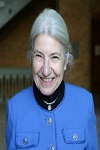
Ruzena Bajcsy
University of California, Berkeley, USA
Title: Personalized model of kinematic and dynamic of physical activities
Biography
Biography: Ruzena Bajcsy
Abstract
By now it has become a cliché the statement that the population in industrial world is aging and hence the problem of physical agility is a serious health problem. Moreover this issue is aggravated even with younger population due to our sedative life style. It also is an undeniable (perhaps even too obvious) fact that every human’s anatomy and physiology is different. In recognition of this fact we are focusing in our efforts in development of personalized models of kinematic and dynamics of an individual during physical activities. For this purpose we are focusing on non-invasive observations in order to extract the necessary physical parameters to develop veritable kinematic and dynamic models of the human physical capabilities. The above mentioned kinematic and dynamical models are facilitated by: Availability of various relatively inexpensive/affordable and noninvasive devices that can deliver the necessary parameters of the position, velocity, acceleration, masses of not only the body but individual limbs, forces generated during various physical activities. These devices are not only the standard cameras, motion capture, force plates and force sensors, Inertial measuring devices, but also hand held ultrasound cameras, infrared sensors measuring oxygen in the blood. More advanced sensors are rapidly developing such as glucose measurements. In this presentation we shall show how this multimedia observations on people enable to develop the individual kinematic and dynamic predictive models of the physical performance of the individual. These models predict not only the physical performance of the individual but also delineate the boundaries of stable reachable space both for kinematic workspace as well as for dynamic workspace.

